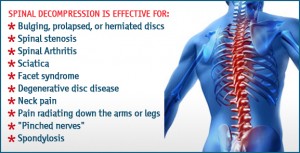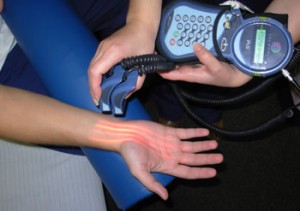








Interesting question as certain food types can reduce inflammation. Today’s research asks the question “Does diet cause arthritis?” The research done in April of 2017 looked at people who had a diet of high fatty acids, specifically a 20 percent saturated fatty acid diet with simple carbs. They noted that these people had osteoarthritic changes in their knee. They looked at the matrix of the cartilage in the knee and they found that the saturated fatty acids deposited into the cartilage in the knee, changing it, which caused it to be softer and more easily worn out, therefore causing more osteoarthritic situations.
This lead to an osteoarthritic like effect in the knee where there was less cushion/support. They also found that below the cartilage of the knee that there were changes in the bony matrix structure as a result of saturated fatty acids infiltrating the bony structure.
So the researcher and author of this study both stated that maybe osteoarthritis is not always just a result of wear and tear, but diet.
If you are eating a lot of fatty acids, you may also weigh more which can be a factor that causes additional wear and tear. So you are not only dealing with cartilage in the knee or a joint that is weaker, but you’re also putting more weight on the joint.
Diet is so important even without issues such as arthritis and we can certainly make suggestions and provide you with guidance to helping you find the right diet and help with your condition.
If you have any questions on our treatment options in New York, please contact us, we would be happy to help you and see what we can do for you.
In pain? Want a tune up?
Schedule an appointment or download our mobile booking app. Enter clinic ID ORTKJR.
Arthritis is a common problem in people, and we see it here frequently at Back & Body NY and we get a lot of patients with neck pain in Manhattan. There are multiple different types of arthritis, a common on being osteoarthritis (oa), known also as degenerative joint disease (djd). Osteoarthritis wears and tears at the muscles because the smooth, shiny cartilage covering the joints that allows for a gliding surface is worn down. This causes pain, swelling, loss of motion, and spurs that restrict movement. The arthritis foundation says that oa/djd affects 27 million Americans, and is most of the times found in the knees, hips, low back, neck, small joints of the fingers, and base of the thumb and big toe.
In a study done, researchers examined cervical x-rays and detached spondylosis. They looked at the degeneration of the intervertebral discs, that rest between the vertebrae of the spine in 60 percent of non symptomatic people over 40 years of age in 95 percent of men and 70 percent of women over the age of 60. Cervical spine mris of people without the neck pain most times showed a disc bulge or herniation. We want you to know that according to the AMA Guides to the Evaluation of Permanent Impairment, 30 percent of people who have never experienced neck or back pain will test positive for a herniated disc, and 50 percent will have bulging discs on a ct or mri.
If you have neck pain and your doctor looks at images that show arthritis or a disc problem, how do you know if djd is the problem? This answer varies on the person.
Although it can be frustrating, it can be difficult to determine what is generating a patient’s pain. This is the reason that the patient has to be examined fully to see where the root of the problem is coming from. Doctors of chiropractic, like us here treating neck pain in Manhattan, will approach the problem with the following therapies: joint manipulation; mobilization; massage; trigger point therapy; exercise training; activity modifications; self-management strategies, such as traction; the use of specially designed pillows; modalities such as electrical stimulation, ultrasound, and laser therapy; and nutritional counseling to reduce inflammatory markers.
Contact us now. We have three simple ways you can make an appointment at our Back and Body NY chiro office:
Call now on (212)371 2000 or text (315)873-3095 or email us at Your.Friends@BackAndBodyNY.com
 Twelve pounds — this, according to the American Chiropractic Association, is the average weight of someone’s head.
Twelve pounds — this, according to the American Chiropractic Association, is the average weight of someone’s head.
Your neck, and your neck alone, supports that weight (and probably more for others); add this to the fact that the flexibility to move your head every which way leads to potential injuries, and you have got one recipe for neck pain.
While some pain issues could only be bothersome, others may signal a more severe medical issue.
In either case, you will want to address the discomfort when the numbness, the stiffness, or the throbbing pain begins to affect your everyday tasks.
Here is a quick list of things to do when you’re faced with neck pain.
Do seek a specialist for your neck pain.
Proper neck pain care NYC residents will want to know, starts off with the appropriate diagnosis. Unless you’ve been in an accident involving your neck, without knowing what is truly causing your cervical spine(i.e., your neck) great discomfort, the course of your treatment might not be so precise or effective. A physician or therapist specializing in neck injuries would be able to alleviate your pain and allow you to recover from the injury.
Do try to reduce stress.
Emotional tension can contract and tighten muscles, which leads to stiffness and pain. Yes, stress cannot be avoided, especially if you work in a high-pressure environment, like emergency health care or investment banking. But you can try to reduce the impact of stressful situations by practicing meditation and doing breathing exercises.
Do limit high-risk activities.
You will want to be very honest with your chiropractor or physical therapist about the level of activities that you do. Certain activities like heavy weight lifting, doing overhead work, or sleeping on a pillow that’s too high or too low could aggravate your neck pain. You’ll want to be as detailed as possible about your activities to the physician so that a determination can be made about whether to limit them or not.
Do practice good posture.
Postural stress can also cause neck pain or contribute to its intensity. Be conscious of how you sit when you work or stand or even watch something on the screen.
Do ask your specialist about your options for traditional and innovative treatments.
Physical therapy is an effective and traditional way of addressing neck pain. But with the advancements in spinal health, you now have wide-ranging options for treatment to speed up recovery. Ask your specialist about Active Release Technique (ART), Graston Technique, and other innovative treatments that resolve neck pains.
 Even in the most developed countries where people are expected to afford quality healthcare, patients suffering from physical pain can still fail to get the right care and treatment they need. For instance, one study estimated that around 108 million adult Americans suffer from a musculoskeletal injury that lasts for more than three months.Experts say this reveals that the “grin and bear it” attitude about pain is prevalent in many cultures, even if there are ways and resources to address it.
Even in the most developed countries where people are expected to afford quality healthcare, patients suffering from physical pain can still fail to get the right care and treatment they need. For instance, one study estimated that around 108 million adult Americans suffer from a musculoskeletal injury that lasts for more than three months.Experts say this reveals that the “grin and bear it” attitude about pain is prevalent in many cultures, even if there are ways and resources to address it.
But pain shouldn’t be simply accepted as a “norm,” even if millions of people around the world experience a form of physical discomfort or agony at least once in their life.Pain affects every aspect of life, so it makes sense to find the best way to minimize, reduce and eliminate it. Living a pain-free life is essential if you want to continue to work for yourself and your loved ones, perform to the best of your ability, and enjoy fulfilling personal relationships.
If you’re suffering from a recent pain or have been enduring a chronic condition for a long time now,one of the most reliable pain management approaches you can try is physical therapy Downtown NY health experts say. Don’t rely on at-home remedies alone; they might help relieve the pain for a while, but you will still need to address the root cause – or risk irreparable damage or long-term consequences to your health.
When you go to a physical therapy clinic, the doctor will require you to undergo a complete diagnostic test. They need to know about your unique condition as a patient so they can determine the right treatment program for you.Do you need relief from the pain and the strain? Are you suffering from an injury that needs to be treated immediately? Is your complaint related to an existing condition? Will you need other treatment approaches that will complement your physical therapy sessions? Are you taking medications that might affect your recovery? All these and more will be considered when coming up with a specialized treatment plan for you.
Physical therapy is not rigid in its setup and can be done in various facilities, such as hospitals, emergency rooms, nursing homes, outpatient clinics and more. However, this doesn’t mean that anyone can practice physical therapy midtown NY experts say the field has grown and advanced through the years and patients can now work with therapists holding advanced degrees and specializing in particular areas of study. For effective, immediate results, look for a licensed (medical board passer) therapist that specializes in your particular condition and who works in a pain management center with state-of-the-art facilities and a caring, compassionate environment.
Lumbar spine surgery. Spinal fusion. Disc replacement. Laminectomy. Back surgery is rarely an easy decision. Unless your condition dictates no other option, you’re likely to look for other ways to resolve your back pain and/or recover from an injury.
 And why not? If you don’t have to undergo an invasive procedure, you won’t have to worry about the potential risks: bleeding, infection, adverse reaction to anesthesia, and others. Plus, a nonsurgical option would certainly be a lot less expensive in comparison to a surgical procedure. One possible back pain solution is the spinal decompression therapy.
And why not? If you don’t have to undergo an invasive procedure, you won’t have to worry about the potential risks: bleeding, infection, adverse reaction to anesthesia, and others. Plus, a nonsurgical option would certainly be a lot less expensive in comparison to a surgical procedure. One possible back pain solution is the spinal decompression therapy.
Spinal decompression therapy, NYC residents might want to know, relieves back pain by gently stretching the spine on a traction table or any motorized device. Stretching the spine allows for change in its position and its force that leads to alleviating the pressure off the spinal discs.
The nonsurgical treatment is recommended for people who experience back pain due to disc herniation, degenerative discs, worn spinal joints (also known as posterior facet syndrome), and injured spinal nerve roots. Spinal decompression, NYC residents would want to know, is not ideal for anyone who has had unsuccessful back surgery, anyone with a spinal tumor, stenosis, or infection, anyone with advanced osteoporosis, Ankylosing spondylitis, or anyone who has already had multiple surgeries.
How does this therapy take place? First thing to note is that you will be fully clothed during the therapy. A harness will be fitted around your pelvis, plus another one around your trunk. You will then lie down — face up or face down — on a computer-controlled table. The computer will then be programmed to customize your treatment. A treatment will generally last from 30 to 45 minutes.
Typical spinal decompression therapy will comprise of 15 to 30 sessions; the number of your sessions will depend on your condition and the findings of your specialist. The costs for each session will vary.
Your specialist may also require you to do certain things before and after the sessions, like performing exercises to improve your mobility and strength and to drink a half-gallon of water daily. You’ll want to get these things in writing so that you don’t forget and you boost your chances of recovery with the nonsurgical therapy.
Back pains are not just physically agonizing, but they can also prevent you from doing what it is you love to do every day. When you’ve got an opportunity to go with a non-invasive treatment, ask your spinal specialist about spinal decompression. And you can maybe start your journey to pain-free days.
 One of the most common conditions believed to come with aging is pain. Sometimes it is caused by certain conditions such as osteoarthritis or bursitis which areusually associated with middle-aged or elderly individuals. Sometimes pain occurs for seemingly no reason at all, other than the result of the everyday wear and tear of aging muscles and ligaments. You may be attending to your regular tasks or activities and pain will come, like a thief in the night, impacting your health and your life in general.
One of the most common conditions believed to come with aging is pain. Sometimes it is caused by certain conditions such as osteoarthritis or bursitis which areusually associated with middle-aged or elderly individuals. Sometimes pain occurs for seemingly no reason at all, other than the result of the everyday wear and tear of aging muscles and ligaments. You may be attending to your regular tasks or activities and pain will come, like a thief in the night, impacting your health and your life in general.
The good news is you can do something about it – who says pain is a “normal” part of aging? Moreover, new innovations and advanced medical research have opened new possibilities for managing, reducing and eliminating pain. When it seems like nothing seems to work, you could turn to cutting-edge technology to see if there’s a solution that could elevate or complement your pain management program.
One of the relatively high-tech healing methods today is cold laser therapy. NYC practitioners recommend this for fast and effective healing. It’s not new per se – it was developed 30 years ago, but in medical research timelinesand in the field of pain relief,cold laser therapy can still be considered a newcomer compared to older methods such as acupuncture. Moreover, the succeeding improvements and developments in cold laser technology through the years lead to the creation of newer, betterversions than before.
Cold laser therapy is recommended for pain relief because of the following benefits it offers:
Painless accuracy.Hot medical lasers can create incisions and can be unbearably painful. Cold laser, also called low-level laser, is painless and non-invasive. It emits light protons that penetrates the skinin the affected areaand provides the body the energy it needs for tissue healing andrepair.
Fast and simple procedure. The duration of each session depends on each patient – it can last for 10 minutes to one hour. No medication or surgery is used, and it is done as an outpatient procedure.
Dramatic results.Cold laser can reach injuries thatare deep inside the body – something that other methods of pain relief can’t – resulting in accelerated reduction of inflammation and significant pain relief.
Additional benefits. Cold laser provides more than just pain relief. It promotes healthy blood circulation andimproves mobility. It helps the regeneration and healing of nerves, muscles, bones, joints, ligaments, joints and tissues.
Cold laser is indicated for a wide variety of painful conditions, including low back or neck pain, muscle injuries, sprains, disc problems, plantar fasciitis, tendonitis, epicondylitis and carpal tunnel syndrome.
 There are more than 200 different types of arthritis, and the bulk of them are not what medical researchers and clinicians would call “hereditary” conditions. However, the genetic makeup of some individuals can make it MORE LIKELY that they will develop certain types of arthritis. We call this a “genetic predisposition”. It’s important to understand this distinction, since many people who carry a predisposing gene will never actually develop the disease.
There are more than 200 different types of arthritis, and the bulk of them are not what medical researchers and clinicians would call “hereditary” conditions. However, the genetic makeup of some individuals can make it MORE LIKELY that they will develop certain types of arthritis. We call this a “genetic predisposition”. It’s important to understand this distinction, since many people who carry a predisposing gene will never actually develop the disease.
Rheumatoid arthritis offers one example. Specific genes, such as HLA-DR4 and HLA-DRB1, can increase your predisposition for acquiring this form of the ailment. According to rheumatology.org, 12%–15% of identical twins develop the condition, whereas only 4% of fraternal twins suffer from it. One Harvard medical report states that rheumatoid arthritis affects 2% of the population but is 3 times more likely to affect women than men. Young and middle-aged adults make up the bulk of sufferers, but the condition can also strike children and seniors. Rheumatoid arthritis occurs as a result of joint inflammation that is caused by the body’s immune system attacking the lining of a person’s joints.
The most common form of arthritis—called “osteoarthritis”—typically occurs among the elderly and seems less strongly tied to genetics. Osteoarthritis is usually a result of daily wear and tear on a joint, causing the cartilage protection between the bones to wear thin and the bones themselves to rub against one another. This results in discomfort or even excruciating pain. Although members of some families are more susceptible to osteoarthritis than others, lifestyle and environmental factors appear to play a larger role. Age, injury, inactivity and obesity all contribute to the likelihood of developing the condition.
Once a person has actually developed arthritis, the severity of symptoms can be influenced by a variety of factors. For instance, certain hormones seem to either increase or decrease the pain that comes with some forms of the disease. Some women have reported a decrease in arthritic symptoms after becoming pregnant only to have the pain return once the pregnancy was over. Other forms of arthritis, such as ankylosing spondylitis, are not affected by pregnancy hormones. Those who suffer osteoarthritis of the hip and knee usually observe a slight increase in symptoms while pregnant, since relaxed ligaments and greater weight puts more strain on the joints.
While there is no cure for rheumatoid arthritis or osteoarthritis, a variety of treatments are available to help patients maintain function and manage pain. In particular, chiropractic care offers an effective option that is both drug- and surgery-free. If you’d like to learn more, please call or visit our office.
 If you or someone you care about is suffering from arthritis, you should know that arthritis doesn’t have to mean an end to an active lifestyle. Prior generations may have accepted the condition as an inevitable part of aging and been given a standard prescription of bed rest and drug therapies. However, today’s health care professionals recognize that appropriate exercise and nutrition are also critical to managing arthritis effectively, and they can recommend a much wider range of treatment options. Your chiropractor can play an important role, not only in relieving pain, but also in helping patients with arthritis continue to live a more independent, active lifestyle.
If you or someone you care about is suffering from arthritis, you should know that arthritis doesn’t have to mean an end to an active lifestyle. Prior generations may have accepted the condition as an inevitable part of aging and been given a standard prescription of bed rest and drug therapies. However, today’s health care professionals recognize that appropriate exercise and nutrition are also critical to managing arthritis effectively, and they can recommend a much wider range of treatment options. Your chiropractor can play an important role, not only in relieving pain, but also in helping patients with arthritis continue to live a more independent, active lifestyle.
Arthritis is not really one medical condition. Rather, it’s a more general term that refers to inflammation that may affect joints and other parts of the body as a result of more than 100 “rheumatic diseases”, such as fibromyalgia, osteoarthritis, and rheumatoid arthritis. These disorders destroy joints, bones, muscles, cartilage and other connective tissues. While arthritis is most often seen in middle aged and older adults, it can also afflict younger people. According to the U.S. Centers for Disease Control and Prevention (CDC), more than 22% of American adults (about 50 million people) report having been diagnosed with arthritis. Their symptoms may include pain, swelling, stiffness, and loss of function in the joints.
While the general public is aware that arthritis is painful, fewer people recognize just how severe and widespread the debilitating effects of arthritis actually are. People with arthritis may experience difficulty with everyday tasks like buttoning shirts or opening packages and containers. They may also find that arthritis limits their mobility. This could prevent them from participating in their favorite activities or spending time with friends and family. The American Academy of Orthopedic Surgeons issued a Bulletin in October 1999 that ranked arthritis as a more frequent cause of activity limitation than heart disease, cancer or diabetes. More than ten years later, the CDC estimates that 21 million Americans face some type of disability as a result of arthritis. These kinds of statistics suggest that strategies for managing arthritis need to address goals beyond pain relief if they are to be truly successful.
How Your Chiropractor Can Help
For many arthritis sufferers, treatment still begins with rest and medication. But if you have arthritis, a chiropractic physician can help you develop a well-rounded, long-term approach to managing your arthritis in two other very important ways:
Designing an exercise program based on your own unique requirements. Such a program usually focuses on a combination of goals, including (1) restoring any lost range of motion in your joints, (2) improving your flexibility and endurance, and (3) increasing your muscle tone and strength. Numerous clinical studies have demonstrated that inactivity can make joints affected by arthritis even more painful and stiff. It can also have other negative health effects. A properly designed and supervised exercise program can reduce these risks.
Suggesting dietary changes and/or nutritional supplements that may be effective in reducing or controlling inflammation in your joints. Some research indicates that certain foods can have a role in either increasing or suppressing the body’s natural inflammatory response. Making adjustments to your diet may reduce swelling, redness and pain related to arthritis.
Keep in mind that some types of physical activity and dietary supplements may actually do more harm than good depending on the specific nature of your arthritis, the joints involved and your current treatment plan. So open communication with all the members of your healthcare team-including your chiropractor, family doctor and any specialists you’re working with-is the key to achieving results safely!
Both the symptoms and underlying causes of arthritis can vary a great deal by individual, so it is important that you consult your healthcare provider for an accurate diagnosis and to put in place a treatment plan that’s right for you.
 Just as the degeneration of joints in the lower spine can result in lumbar arthritis, degeneration of the facet joints in the upper (cervical) spine can lead to cervical arthritis. This condition is also called cervical spondylosis, cervical osteoarthritis, or degenerative neck disease (DND). Whatever you call it, it’s…literally…a pain in the neck. Cervical arthritis is caused by wear and tear at the intersection of the cervical spinal discs and the facet joint that connects them to the rest of the spine. This wear and tear may be caused by aging, or by excessive pressure being placed on the discs and facet joint by poor posture or injury. Most cases of cervical osteoarthritis occur in individuals aged 55 or older, but can also affect younger people. Left untreated, the spinal discs and the facet joint can continue to deteriorate, becoming dry, brittle and cracked, and possibly cause the vertebrae to compress against, which can lead to pinched nerves.
Just as the degeneration of joints in the lower spine can result in lumbar arthritis, degeneration of the facet joints in the upper (cervical) spine can lead to cervical arthritis. This condition is also called cervical spondylosis, cervical osteoarthritis, or degenerative neck disease (DND). Whatever you call it, it’s…literally…a pain in the neck. Cervical arthritis is caused by wear and tear at the intersection of the cervical spinal discs and the facet joint that connects them to the rest of the spine. This wear and tear may be caused by aging, or by excessive pressure being placed on the discs and facet joint by poor posture or injury. Most cases of cervical osteoarthritis occur in individuals aged 55 or older, but can also affect younger people. Left untreated, the spinal discs and the facet joint can continue to deteriorate, becoming dry, brittle and cracked, and possibly cause the vertebrae to compress against, which can lead to pinched nerves.
The symptoms of cervical arthritis include pain and stiffness in the neck, and possible feelings of numbness, tingling, or weakness. The pain may be felt to radiate to the shoulder or between the shoulder blades, and may include headaches, especially in the back of the head. The stiffness may be worse in the early morning, and then improve as you move around; the pain tends to be worse towards the end of the day. As with many degenerative diseases, there is no absolute cure for cervical arthritis because the damage – caused over time by aging – cannot be reversed. For this reason, neither prescription nor over-the-counter medications can reverse the degeneration; medical doctors tend to treat the condition with anti-inflammatories and pain relievers, and in some cases direct injection of corticosteroids.
Chiropractors are also trained to diagnose and treat cervical arthritis, but in their case the treatment is more holistic. Chiropractors are most concerned with proper function and motion of the spinal joints and the soft tissues that surround them. Their primary form of treatment is spinal manipulation or adjustments, to improve mobility and restore a normal range of motion not only to the cervical joints, but also to the entire spine. After a thorough examination to determine the exact causes of your condition, your chiropractor may prescribe a series of adjustments to correct imbalances in the spine and joints that may have caused the wear and tear in the first place, and which may be perpetuating it.
Many chiropractors also use a number of related therapies such as therapeutic massage, ultrasound, electrical stimulation (which alternately stimulates and relaxes muscles to help them loosen up), and gentle stretching exercises to treat the muscles surrounding the neck joints, which may be contributing to its improper function. While chiropractic treatment may not be appropriate in every case, for many these treatments can decrease and even eliminate the pain of cervical arthritis.
 Niacin (also known as vitamin B3 or nicotinic acid), is one of the water-soluble B-complex vitamins that provides a range of health benefits, including reducing your level of “bad” LDL cholesterol while raising your level of “good” HDL cholesterol. The body uses niacin, as it does the other B vitamins, to convert food into energy and maintain a healthy nervous system. Niacin also plays a key role in the metabolism of fats, including the synthesis of such fat-based hormones as androgens, estrogens, progestins and stress-related hormones.
Niacin (also known as vitamin B3 or nicotinic acid), is one of the water-soluble B-complex vitamins that provides a range of health benefits, including reducing your level of “bad” LDL cholesterol while raising your level of “good” HDL cholesterol. The body uses niacin, as it does the other B vitamins, to convert food into energy and maintain a healthy nervous system. Niacin also plays a key role in the metabolism of fats, including the synthesis of such fat-based hormones as androgens, estrogens, progestins and stress-related hormones.
The benefit of niacin to healthy brain function has been demonstrated by a study showing its effectiveness in helping protect against age-related cognitive decline and Alzheimer’s disease. Researchers from the Centers for Disease Control and Prevention conducted a study on nearly four thousand elderly residents of a Chicago community. Over a period of almost six years, the residents’ dietary data was collected and cognitive assessments were conducted. The results found a definite positive correlation between niacin intake and reduction in mental impairment.
A derivative of niacin, niacinamide, is often useful in the treatment of osteoarthritis and rheumatoid arthritis. Dr. William Kaufman has been studying the use of niacinamide in the treatment of arthritis since the 1950s and writes of its benefits, “It measurably improves joint mobility, muscle strength, decreases fatigability. It increases maximal muscle working capacity, reduces or completely eliminates arthritic joint pain.”
As the body is unable to absorb more than 250 mg of niacinamide at a time, it is more effective to take smaller does more often (perhaps every one to three hours) than one large dose per day. It is estimated that nearly 70 percent of arthritis patients will experience increased joint mobility after four weeks of treatment.
Though niacin deficiency is uncommon, it tends to occur most often in populations that suffer from poverty, malnourishment or chronic alcoholism. This deficiency can lead to a disease called pellagra, in which the patient suffers from dermatitis, diarrhea and dementia. A severe lack of niacin can be deadly, if left untreated. Populations who use corn products (such as cornmeal) as the main staple of their diet often suffer from pellagra, as the niacin in corn is not easily absorbed by the body. Interestingly, adding limestone during cooking (often just by cooking food in high calcium content water) helps to make the vitamin bio-available, and Native Americans have incorporated ash from their cooking fires into their corn-based dishes for generations.
The recommended daily intake of niacin is 14-16 mg per day for adults, which can be easily achieved from eating a balanced diet. The food sources highest in niacin are yeast, meat, poultry, tuna, salmon, whole grain cereals, legumes and seeds. Other good sources are green leafy vegetables, coffee, tea and milk.